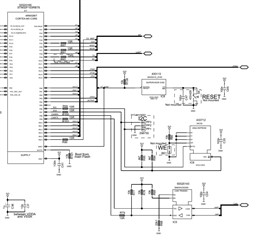Dear TI,
in our PCBA design we use the component SN65HVD234D with a STM32F103 controller to send and receive data in our CAN bus line.
This PCBA is used on field in an elevator installation. The SN65HVD234D is used in many nodes in our CAN bus system in the elevator and we never had any issue, except for this very specific installation where we experience a weird effect. This installation suffers of bad power supply and noises on the main line.
For any reason it seems that the transceiver stop sending CAN messages but it continue to receive them. The STM32 send the messages, but using a CAN analyzer does not shows nothing on the line. To make it working again a power cycle on the PCBA must be performed.
Looking at your datasheet is written:
> Designed for operation in especially harsh environments, the devices feature cross-wire protection, overvoltage protection up > to ±36 V, loss of ground protection, overtemperature (thermal shutdown) protection, and common-mode transient protection > of ±100 V
If any of this condition occurs, what is the behavior of the SN65HVD234D? the device autorecover?
Is possible that only the TX line is being blocked caused by an external interference?
Transceiver connection:

CAN input filter/protection circuit:


